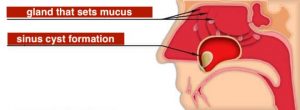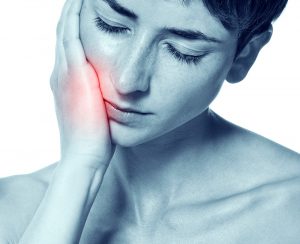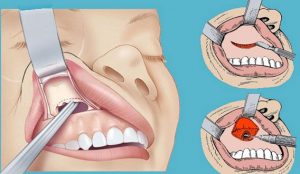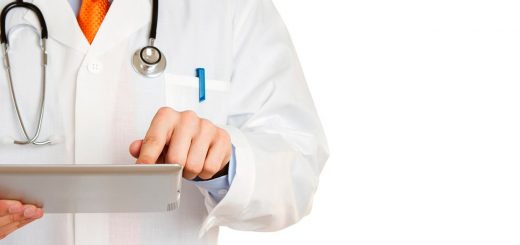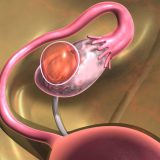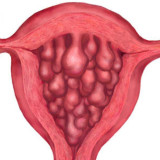Nasal cyst or nasal cyst is a pathological formation in the nasal cavity. It’s considered abnormal, but not malignant. A sinus cyst looks like a small container that is filled with a liquid substance. Typically, cyst formation occurs in the paranasal sinus.
Sinuses are an excellent tool for distilling air and performing protective functions. They are covered with mucous membrane, which is formed by a special gland, located in the cavities of the sinuses. Such an unusual structure helps to protect the sinuses from respiratory infections and ensures the constant maintenance of a moist environment.
Due to some factors, the ducts may close. In this case, the accumulation of a liquid substance in the epithelial membrane (epithelial bladder) occurs. There have been cases when the formation was formed from its own sinus tissue.
In 8 out of 10 cases, the epithelial bladder forms in the frontal sinuses. Because of this, the person feels strong periodic headaches, it becomes difficult for him to breathe. About 20% of patients have cysts in the ethmoid labyrinth. 4% of people have cysts in the maxillary sinuses. Each disease has different symptoms and treatment approaches.
When the patient learns about the diagnosis, then he often asks the question: “Is nasal cyst dangerous?” To begin with, the person must calm down and this type of wrist formation cannot seriously change the structure of tissues or cells. But we must remember that a cyst will never resolve on its own. It is necessary to consult a specialist. Also, it is necessary to carry out all the therapeutic instructions of the doctor, so that the treatment is as effective as possible.
Causes of nasal cyst formation
Above it was said that the most common cause of sinus cyst formation is blockage of the ducts and the release of a large amount of liquid substance. In addition to the main reason, there are several options that can lead to the formation of cysts:
- Nasal injuries. Hematomas can cause cyst development in the sinuses;
- Allergy. Allergic reactions can trigger the release of large amounts of mucin. The nasal ducts may not withstand fluid flow, which leads to their blockage;
- Colds. During a cold, a person’s immunity is severely weakened due to inflammatory processes. The disease is accompanied by narrowing of the vessels in the nose, which sometimes causes a blockage of the ducts and nasal glands;
- Abnormal growth of tissues. Sometimes the tissues inside the nose can grow due to the nature of the human body. They cause pressure on the sinuses and begin to form containers filled with liquid substance.
Unusual causes of sinus cyst formation:
- Dental problems. Sometimes the formation of a cyst is affected by the roots of the teeth of the upper row, because they are close to the source of the disease;
- Non-anatomical structure of the nasopharynx. Congenital or acquired defects of the nasal septum causes an unusual anomaly: a different volume of air passes through each nostril. Nostril, which gets more air, doesn’t have time to get warm. Because of the anomaly, a person is more likely to get sick. Inflammatory processes during illness lead to sinus cyst formation.
The risk group includes several categories of people:
- People who have chronic inflammatory diseases;
- Allergy sufferers;
- People with the abnormal nasal septum structure;
- People who have serious dental problems.
Such human health conditions don’t guarantee that they will necessarily have a cyst. The list contains only groups that are prone to similar diseases.
Types of nasal cysts
Sinus cysts are distinguished by the method of their formation:
- True nasal cyst. Bladder or sinus tank is filled with secretory fluid. Its walls are made up of epithelial cells. The appearance of cells is a consequence of mucosal edema due to inflammatory processes;
- False nasal cyst. It’s mainly formed due to adverse factors. For example, inflammatory processes in dental roots provoke the germination of a cyst in the maxillary sinus. This type of cyst is called the maxillary cyst.
Sinus cysts are distinguished by the place of their formation:
- Highmore’s formations;
- Frontal cysts;
- Cysts of the sphenoid sinus;
- Cysts in the ethmoid cells.
Cysts also differ in their location in the symmetric structure of the nasopharynx. That is, there are cysts of the right and left sinuses.
Nasal cysts are distinguished by the type of fluid in the container / capsule:
- Pus;
- Plasma and blood;
- Ferrous secret.
Symptoms of nasal cysts
In the early stages of cyst formation, most often the specific symptoms are simply not visible. A person may notice the presence of a cyst completely by accident. As the pathological formation increases, the symptoms become more visible and obvious:
- A person begins to feel a foreign body in the nasal cavity;
- Difficult breathing through the nose. Medications cannot solve this problem;
- If the cyst begins to press on the optic nerve, then the person may begin to split in the eyes;
- Pain in the nasopharynx. Usually painful sensations are concentrated at the side of cyst formation. When pressed, the pain increases and is given to the frontal part of a patient’s head;
- Symptoms of a cyst can be similar to the symptoms of sinusitis due to the large amount of pus that is secreted (runny nose, heat, feeling of weakness, headaches).
Ignoring the above symptoms can lead to a strong growth of the cyst and further rupture of the capsule. The rupture is accompanied by severe edema of the nasolabial part of the face, discharge of pus from the nose and an increase in temperature.
Now the level of medicine has grown significantly and the diagnosis of a cyst is possible at all stages of its growth. A timely visit to the doctor will help prevent the serious consequences of this disease.
Sinus cyst treatment methods
Treatment of nasal cyst depends on its type, location and size. If the formation has a small size (up to 1 cm) and doesn’t emit liquid substances, then the attending physician usually prescribes standard treatment methods: regular examination, tablets, sprays, drops. If the formation is large in size and exudes pus, then surgical intervention is necessary.
Medications treatment of sinus cyst
The method aims to eliminate unpleasant symptoms. Medications treatment can alleviate the patient’s condition, but cyst cannot be completely removed with a medicine. This is due to the fact that many cysts have a dense shell and cannot dissolve it with simple medicines.
What drugs are used to treat sinus cysts:
- Vasoconstrictor agents. They help to normalize the human respiratory system and remove swelling;
- Antihistamines. They are used if the swelling is caused by an allergic reaction;
- Mucolytic drugs. They normalize the outflow of mucus;
- Antiseptic. They help fight inflammation and clean the mucous surface of the nasopharynx;
- Nasal sprays and drops. Medications help normalize the flora;
- Painkillers. It is necessary for strong pressure and pain due to sinus cyst.
Sinus cyst surgery
The purpose of the operation occurs in two cases:
- The size of the cyst exceeds 8 mm;
- If there is an active process of excretion of pus.
The most popular treatment for cysts is puncturing. The surgeon pierces the wall of the cyst with a thin needle and pumps out a purulent substance. However, this method has only a temporary effect. Puncturing a cyst for some time relieves a person from pain. Gradually, the cyst will again grow together and begin to accumulate purulent fluid. Therefore, for the complete removal of sinus cyst requires more serious surgical intervention.
Consider several methods for removing sinus cyst:
Operation Caldwell-Luc
Highmorotomia, which is carried out through an incision under the upper lip in the human oral cavity. This is a classic method of removing nasal cyst. This method allows you to remove formations that are too deep. The cost of the operation is quite low due to the fact that it does not use special or expensive equipment. Perhaps for this reason, Caldwell-Luc surgery is the most popular among the patients.
Despite the positive side of the method of removing sinus cyst, this operation has its drawbacks:
- General anesthesia;
- Trauma to the mucous and bone tissue;
- The likelihood of severe bleeding;
- Hospital stay up to 10 days;
- A scar is formed. Possible occurrence of adhesions;
- Side effects: the development of sinusitis and rhinitis, prolonged discharge from the nose, numbness of the lips and cheeks.
Endoscopy
This method is considered the most benign. The operation is performed using a special device – an endoscope. During the procedure, do not make unnecessary incisions and punctures on the face of the patient. The operation is performed through the nasal passages and fistula.
Advantages of the endoscopic sinus cyst removal method:
- Local anesthesia;
- The possibility of application in the field of pediatrics;
- Reduced likelihood of recurrence of cysts;
- Hospital stay up to 2 days;
- Due to the use of a small video camera, the accuracy of the surgeon’s actions increases;
- Fast healing process. The operation does not leave scars, there is no risk of adhesions;
Nasal cyst removal by laser
Removal of a cyst occurs by burning a capsule with a purulent substance. The method is suitable for removing small formations (up to 4 mm). During the operation, the burning area is disinfected and sealed, which eliminates the risk of severe bleeding.
Folk remedies for the treatment of nasal cyst
These methods are not a panacea for sinus cysts. Folk remedies only facilitate the pain of the patient and are considered only a supplement in the main course of treatment. Any remedy of traditional medicine must be coordinated with your doctor.
Recommended folk remedies that help in the treatment of sinus cysts:
- If a cyst ruptures, the nasal cavity should be flushed. Washing should be done with an isotonic solution (saline), which can be purchased at the pharmacy. If you don’t have this medicine, then dilute 5 grams. salt and 5 gr. soda in 200 ml of water. To rinse, pour the solution into one nostril and push it through the other;
- Honey has healing and disinfecting properties. Honey doesn’t allow harmful bacteria to get into a bursting cyst, and it also has a mild effect on the mucous membrane. Take a cotton swab, twist it into a tube and dip it in honey. Insert the obtained cotton swab into the nasal opening for 20 minutes.
Prevention of nasal cyst
To prevent the appearance of nasal cyst, several tips should be followed:
- Engage in timely treatment of rhinitis and sinusitis;
- Have the right bite. In case of bite problems, you should solve this problem at a young age;
- Remove polyps from the nasal cavity in a timely manner;
- Avoid allergens and treat allergic manifestations in time;
- Visit dentists regularly. Treat the inflammatory processes in the teeth.
You shouldn’t tolerate pain and wait until the cyst becomes very large. If you notice symptoms of sinus cyst, immediately contact your doctor.
